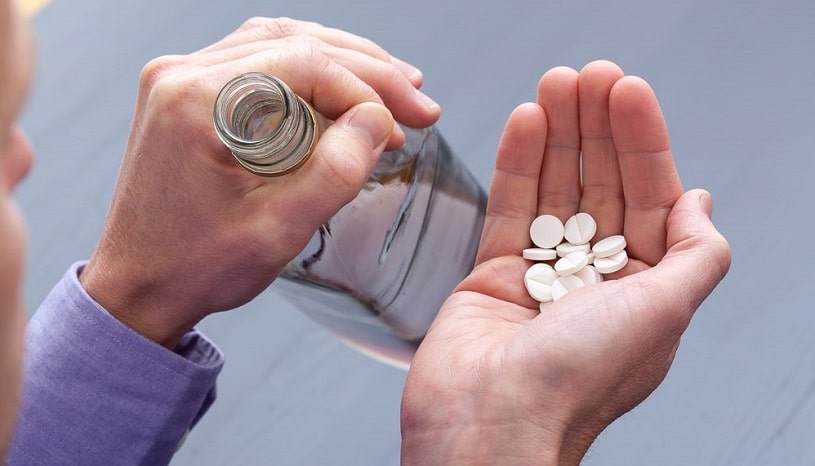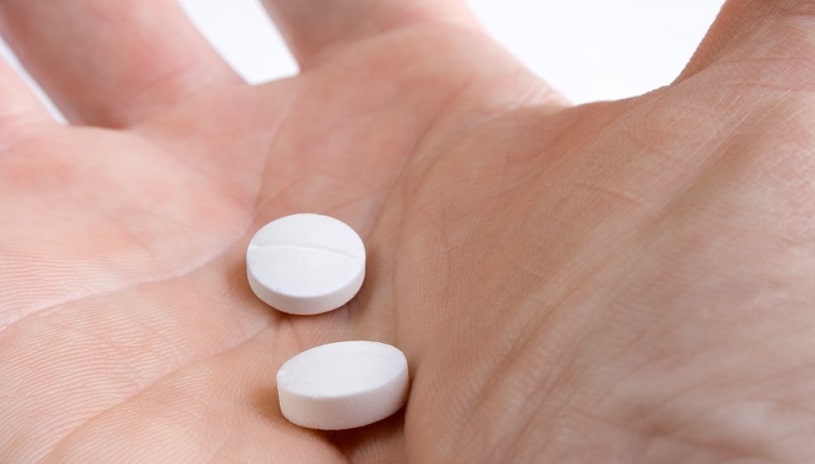Seroquel is used to treat schizophrenia, bipolar disorder, and other mental illnesses. Like all medicines, Quetiapine interactions can occur with certain medications and substances. Read along further to find out the alcohol and Seroquel interaction, other quetiapine interactions, and how to use it safely to avoid a dangerous Seroquel interaction.
Table Of Contents:
Seroquel And Alcohol Interaction
Seroquel drug class is an atypical antipsychotic medication. Since it is prescribed for certain mental illnesses, some patients might combine it with alcohol to enhance its effects. However, according to the Food and Drug Administration guidelines, Seroquel and alcohol should not be consumed together as it can worsen the side effects.

In most cases, using these two drugs with one another will not be fatal or life-threatening, especially when alcohol is taken in moderation. However, Quetiapine can increase the effects that alcohol has on the CNS regarding motor and cognitive function. As a result, it is essential to monitor the amount of alcohol taken while on this drug. One beer or glass of wine may not be a problem, but it is best to contact your doctor before consuming alcohol with this drug.
Taking Seroquel and alcohol can also affect how the body metabolizes Quetiapine and can make even small amounts of the medicine more potent. It can result in the worsening of its adverse reactions. Both of these substances can cause the effect of the other to increase, which can result in Quetiapine overdose if care is not taken.
The Following Are Some of the Side Effects That Can Be Experienced When These Drugs Are Mixed:
- Drowsiness
- Lightheadedness
- Impaired concentration
- Impaired judgment
- Agitation
- Memory loss
- Aggression
- Mood changes
- Nausea
- Vomiting
- Headaches
Interestingly enough, despite this, the use of this drug with alcohol may sometimes be allowed in cases of alcoholism, as it is used off-label to relieve symptoms of alcohol abuse. Information gathered from studies has pointed to the efficacy of Quetiapine on the health of these individuals. This is because some of its health effects, such as mood, sleep, and anxiety, are helpful in the management of withdrawal symptoms and other symptoms of dependence in those with alcohol addiction.
Despite this, it is still not advised that any patient use alcohol and Quetiapine without making sure they contact their doctor.
Seroquel Interactions With Illicit Substances
Apart from Seroquel and alcohol, quetiapine interactions have been found to occur with certain other substances. Patients who take Seroquel for anxiety might try to combine it with an illicit substance to enhance its effects. However, this combination may cause serious side effects, which can even prove to be fatal. Some of the quetiapine interactions with other substances are described in the following sections.
Seroquel And Marijuana
As a substance that also targets the CNS, using this drug with cannabis can have some unpleasant effects similar to alcohol. There is likely to be an increase in the sedative and cognitive effects of cannabis when it is used with this medication. This includes inattention, impaired judgment and concentration, and poor motor skills.
Like alcohol, research is being done to gather information on whether this drug can be used in the treatment of marijuana use disorder and withdrawal symptoms. One study showed improved sleep and decreased weight loss during withdrawal, though relapse was more severe. Another study with a similar aim showed an improvement in cannabis use among patients dependent on it.
Seroquel And Cocaine
When cocaine is used while taking this drug, it can increase the adverse reactions of Quetiapine even when taken in low doses.
A study done on Rhesus monkeys provided some interesting information. This study showed that while Quetiapine itself has no potential for abuse, it increases the addictive potential of cocaine when taken together.
This means that anyone using this medication for any condition may find themselves very quickly dependent on cocaine if they abuse it. Cocaine is one of the drugs not to take with Seroquel.
Other Drugs Not to Take with Seroquel
Certain medications, when taken together, can have a negative effect on the patient’s body and health. When taking Quetiapine, caution should be exercised since it can cause an interaction with several other drugs. These quetiapine interactions with other drugs are described in detail in the following sections.
Quetiapine Interactions With Benzodiazepines
Benzodiazepines are a class of medication that is used to treat conditions such as anxiety and insomnia. They work by having a sedative effect on the central nervous system. Such medicines that can cause drowsiness and sleepiness can worsen these effects when taken with Quetiapine.

When taken together, Quetiapine and Xanax (which belongs to benzodiazepines) can interact with each other and cause side effects such as the worsening of dizziness, drowsiness, and sleepiness. Operating vehicles and heavy machinery in such a situation can prove life-threatening.
Quetiapine interactions also occur with other benzodiazepines such as Klonopin and Valium. When this medication and Klonopin are taken together, it can worsen the side effects of drowsiness and dizziness. The same kind of interaction is observed in the case of taking Quetiapine and valium together.
The combination with Ativan can lead to excessive sedation, confusion, dizziness, and lack of coordination that can put the patient’s life and other people’s lives around them at risk. Benzodiazepines are drugs not to take with Seroquel.
Quetiapine Interactions With SNRIs
SNRIs (Serotonin-norepinephrine reuptake inhibitors) are a class of antidepressant drugs used to treat different types of depressive disorders, including anxiety, OCD, social phobia, and others. They work by affecting brain chemistry and help to regulate mood. Seroquel’s mechanism of action is relatively similar since it also works by restoring the balance of neurotransmitters in one’s brain.
The study about quetiapine augmentation in depressed patients on SNRIs showed an improvement in depression when Quetiapine was combined with SNRIs. Cymbalta and Seroquel, when taken together, complement each other well with mild interactions. The sleepiness and drowsiness may increase slightly, but not to that extent, which can become dangerous. However, in some cases, this medication and Cymbalta may cause serious interactions.
When this drug and Effexor are taken together, they can increase the risk of an irregular heart rhythm that can be quite serious. Although it is a rare side effect, the possibility of such an interaction is present.
Interactions With Antipsychotics
Quetiapine itself belongs to the antipsychotic drug class. Sometimes, patients might combine this medication with other antipsychotic drugs to enhance antidepressant effects. Certain antipsychotic drugs can safely be combined with Quetiapine for the treatment of various mental disorders. According to this research about the combination of Abilify and Seroquel for treating patients of schizophrenia, the results concluded that the combination was well-tolerated and generally safe.
Taking Zyprexa and this drug together can result in a slight worsening of the side effects, including weight gain. A doctor may prescribe these two medications together if he believes that the patient will benefit from this combination as compared to taking any of them alone. However, losing weight on Seroquel and a combination with another antipsychotic substance can become a challenging task.
Quetiapine Interactions With SSRIs
SSRIs are selective serotonin reuptake inhibitors used as antidepressants for the treatment of various depressive and anxiety disorders. SSRIs work by increasing the levels of serotonin (a neurotransmitter) in the brain. Through recent studies and research, it is shown that combining Quetiapine with SSRIs can prove to be beneficial in treating mental conditions such as depression and schizophrenia.

An extensive study was carried out to determine the safety and efficacy of using Quetiapine with SSRIs on patients with major depressive disorders. This study concluded that Quetiapine and SSRIs are well-tolerated, and no significant drug interactions were found.
However, when Seroquel and Lexapro are used together, there is the chance of a very rare side effect occurring, which is cardiac arrhythmias. This is when the heart rhythm is irregular, and it beats abnormally, which can be potentially life-threatening. That is why before Seroquel and Lexapro are used together, a doctor should be aware. It occurs more commonly in those with previous cardiac conditions.
The same applies to Zoloft and Seroquel. It is essential to contact one’s doctor to be aware of the medication a person is on and their health and any conditions such as cardiac disease before putting them on Zoloft and Seroquel.
Other Seroquel Interactions
Quetiapine drug interactions can appear with certain other drugs as well. Some of these interactions may be mild and can be well-tolerated if Quetiapine and the doses of other medications are taken as prescribed by the doctor. However, in some cases, drug interactions of this medication with other medicines may have severe effects on health, which should be avoided entirely.
Some of the Medicines That Cause Mild or No Drug Interactions When Used With Quetiapine Are Listed Below:
- Lamictal is an anticonvulsant medication that is used to treat epilepsy, seizures, and bipolar disorders. Combining Lamictal and this drug for the treatment of these disorders has shown to improve the treatment success and are both well-tolerated together.
- Ambien belongs to the class of drugs called sedatives that are used to treat sleep problems and insomnia. Taking Ambien and this drug together does not cause any significant interactions and is well tolerated.
- Depakote is a type of medication used for the treatment of epilepsy, seizures, bipolar disorder, and migraine headaches. Depakote and Seroquel can be taken together for the treatment of bipolar disorder with no negative interactions.
- Wellbutrin is an antidepressant drug. When Quetiapine and Wellbutrin are combined, they may increase the risk of seizures, but that is a rare side effect.
Some of the severe drug interactions with other medicines are further described below:
Seroquel And Adderall
Adderall belongs to the drug class called stimulants, whose objective is to boost dopamine levels. Quetiapine, on the other hand, is an antagonist of serotonin and dopamine. Thus, both Quetiapine and Adderall are opposites of each other. Taking them both together can lead to a severe interaction since both will negate the other’s effect and send the brain transmitters into a frenzy.
Lithium And Seroquel
Lithium is commonly used for the treatment of manic depressive disorders and bipolar disorders. When lithium and this medication are combined, it can cause serious drug interactions.
It can lead to delirium and acute lithium intoxication, which can be avoided by not taking these medicines together.
Seroquel And Benadryl
Benadryl is an antihistamine that is used to treat allergies and to induce sleep. Since Seroquel also causes drowsiness and sleepiness, taking this drug and Benadryl together can worsen the side effects and cause dangerous interactions. Severe adverse reactions such as dizziness, dry mouth, reduced heart rate, confusion, blurred vision, and fever may occur.
Tramadol and Seroquel
Tramadol is an opioid that is used for chronic pain medication. Taking tramadol and Seroquel together can cause serious interaction resulting in severe side effects such as seizures, respiratory distress, coma, and even death.

Similarly, Methadone is also an opioid. Taking Seroquel and Methadone together can cause serious adverse events and should be avoided. It can lead to increased sedation and a dangerously slow heart rate.
Seroquel And Caffeine
Caffeine has been shown to interact with certain drugs. However, Quetiapine has not been established to be one of them.
Avoiding Dangerous Seroquel Interactions
Seroquel works well with some medicines, whereas it can cause serious drug interactions with others, such as Seroquel and alcohol. The combined effects of some drugs with Seroquel can lead to an overdose that could result in severe side effects. There are many drugs not to take with Seroquel.
Patients who are on Quetiapine should always inform their doctor about using this drug so that the doctor can prescribe medicines that do not interact with Quetiapine. The doctor can guide patients about what drugs should not be taken with Quetiapine and other substances that should be avoided while on this medication.
Quetiapine should always be taken according to the dosage prescribed by the doctor. Some people abuse it also by crushing and snorting Seroquel pills. This behavior can increase the risk of overdosing and should be avoided. Snorting or taking large doses of Quetiapine may be a sign of addiction to this drug. This condition should be examined by an addiction treatment expert as soon as possible. If it takes place in a patient, they should contact a doctor and be sent to a rehabilitation facility where they will get help to overcome the addiction.
Hope Without Commitment
Find the best treatment options. Call our free and confidential helpline
Most private insurances accepted
Page Sources
- Kane, J. M., Correll, C. U., Goff, D. C., Kirkpatrick, B., Marder, S. R., Vester-Blokland, E., Sun, W., Carson, W. H., Pikalov, A., & Assunção-Talbott, S. (2009). A multicenter, randomized, double-blind, placebo-controlled, 16-week study of adjunctive aripiprazole for schizophrenia or schizoaffective disorder inadequately treated with quetiapine or risperidone monotherapy. The Journal of clinical psychiatry, 70(10), 1348–1357. https://pubmed.ncbi.nlm.nih.gov/19906340/
- Olver, J. S., Ignatiadis, S., Maruff, P., Burrows, G. D., & Norman, T. R. (2008). Quetiapine augmentation in depressed patients with partial response to antidepressants. Human psychopharmacology, 23(8), 653–660.https://pubmed.ncbi.nlm.nih.gov/18816504/
- Matthews J. D., Seroquel Alone Versus Seroquel With an SSRI for Depression With Psychotic Symptoms (Seroquel), 2016, https://clinicaltrials.gov/ct2/show/NCT00955474,
- Monnelly, E. P., Ciraulo, D. A., Knapp, C., LoCastro, J., & Sepulveda, I. (2004). Quetiapine for treatment of alcohol dependence. Journal of clinical psychopharmacology, 24(5), 532–535. https://pubmed.ncbi.nlm.nih.gov/15349010/
- United States Food and Drug Administration, Seroquel Full Prescribing Information, 2013, https://www.accessdata.fda.gov/drugsatfda_docs/label/2013/020639s061lbl.pdf
- Ray, L. A., Heydari, A., & Zorick, T. (2010). Quetiapine for the treatment of alcoholism: scientific rationale and review of the literature. Drug and alcohol review, 29(5), 568–575. https://pubmed.ncbi.nlm.nih.gov/20887583/
- Cooper, Z. D., Foltin, R. W., Hart, C. L., Vosburg, S. K., Comer, S. D., & Haney, M. (2013). A human laboratory study investigating the effects of quetiapine on marijuana withdrawal and relapse in daily marijuana smokers. Addiction biology, 18(6), 993–1002. https://pubmed.ncbi.nlm.nih.gov/22741619/
- Mariani, J. J., Pavlicova, M., Mamczur, A. K., Bisaga, A., Nunes, E. V., & Levin, F. R. (2014). Open-label pilot study of quetiapine treatment for cannabis dependence. The American journal of drug and alcohol abuse, 40(4), 280–284. https://www.ncbi.nlm.nih.gov/pmc/articles/PMC4232231/
- Brutcher, R. E., Nader, S. H., & Nader, M. A. (2016). Evaluation of the Reinforcing Effect of Quetiapine, Alone and in Combination with Cocaine, in Rhesus Monkeys. The Journal of pharmacology and experimental therapeutics, 356(2), 244–250. https://www.ncbi.nlm.nih.gov/pmc/articles/PMC4727159/

 Authored by
Authored by  Reviewed by
Reviewed by 
